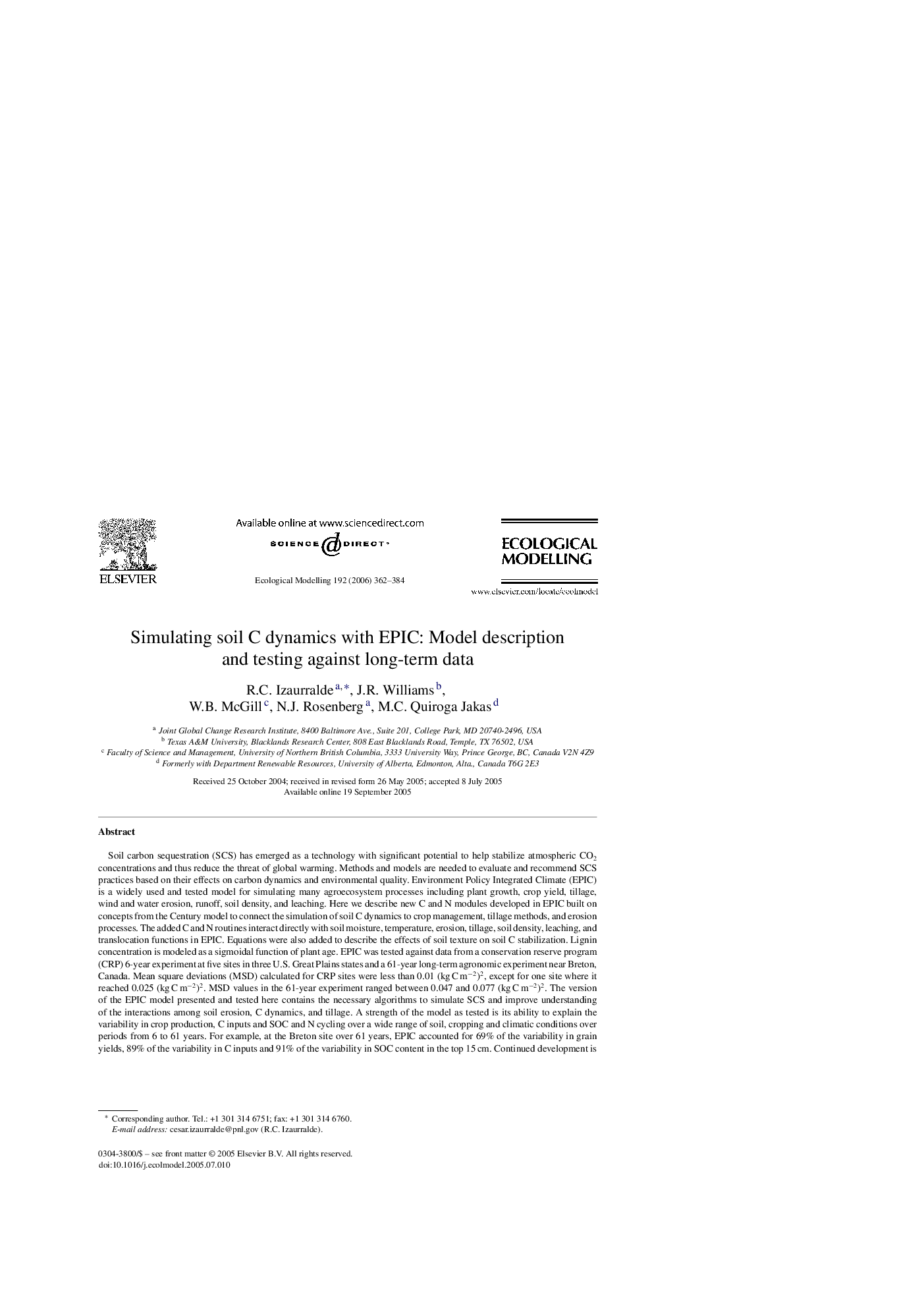| Article ID | Journal | Published Year | Pages | File Type |
|---|---|---|---|---|
| 4379284 | Ecological Modelling | 2006 | 23 Pages |
Soil carbon sequestration (SCS) has emerged as a technology with significant potential to help stabilize atmospheric CO2 concentrations and thus reduce the threat of global warming. Methods and models are needed to evaluate and recommend SCS practices based on their effects on carbon dynamics and environmental quality. Environment Policy Integrated Climate (EPIC) is a widely used and tested model for simulating many agroecosystem processes including plant growth, crop yield, tillage, wind and water erosion, runoff, soil density, and leaching. Here we describe new C and N modules developed in EPIC built on concepts from the Century model to connect the simulation of soil C dynamics to crop management, tillage methods, and erosion processes. The added C and N routines interact directly with soil moisture, temperature, erosion, tillage, soil density, leaching, and translocation functions in EPIC. Equations were also added to describe the effects of soil texture on soil C stabilization. Lignin concentration is modeled as a sigmoidal function of plant age. EPIC was tested against data from a conservation reserve program (CRP) 6-year experiment at five sites in three U.S. Great Plains states and a 61-year long-term agronomic experiment near Breton, Canada. Mean square deviations (MSD) calculated for CRP sites were less than 0.01 (kg C m−2)2, except for one site where it reached 0.025 (kg C m−2)2. MSD values in the 61-year experiment ranged between 0.047 and 0.077 (kg C m−2)2. The version of the EPIC model presented and tested here contains the necessary algorithms to simulate SCS and improve understanding of the interactions among soil erosion, C dynamics, and tillage. A strength of the model as tested is its ability to explain the variability in crop production, C inputs and SOC and N cycling over a wide range of soil, cropping and climatic conditions over periods from 6 to 61 years. For example, at the Breton site over 61 years, EPIC accounted for 69% of the variability in grain yields, 89% of the variability in C inputs and 91% of the variability in SOC content in the top 15 cm. Continued development is needed in understanding why it overpredicts at low SOC and underpredicts at high SOC. Possibilities now exist to connect the C and N cycling parts of EPIC to algorithms to describe denitrification as driven by C metabolism and oxygen availability.
